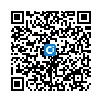專輯分類:
其他軟件教程 :
MARI
文件總數(shù):22 集
4K
58 人已學(xué)習(xí)
收藏
分享
舉報(bào)
愛(ài)給網(wǎng)提供海量的其他軟件教程資源素材免費(fèi)下載�,
本次作品為mp4
格式的21_鏡面的細(xì)化(21_Specular_refinement),
本站編號(hào)31881758�,
該其他軟件教程素材大小為54m,
時(shí)長(zhǎng)為10分 00秒�����,
支持4K播放,
不同倍速播放
作者為alith3204�����,
更多精彩其他軟件教程素材�,盡在愛(ài)給網(wǎng)。
教程簡(jiǎn)介:
When it comes to creating textures for a project, sometimes UV maps just aren’t available for an asset. Ptex provides a wonderful solution to this problem by allowing us to paint textures on each face without the use of UVs. In addition, MARI 2.0’s true layer-based painting workflow makes creating these textures an absolute joy. To get started with this project we will learn how to create our Ptex project in MARI using an existing .obj file. From here we will begin the process of creating selection groups to help us target areas for paint. Next we will gradually work though both base textures and eventually some wonderful details for our robot. Along the way, we will learn about various workflow tips and tricks for working in MARI 2.0 including setting up channels for each of our texture maps, painting with images and both projection and layer masking. We will really flex MARI’s new layer system in this training, and utilize not only procedural layers and adjustment layers but also mask groups. After going through this tutorial, not only will you have a fully textured asset but you will also have learned a good deal about the powerful features that have been packed into MARI 2.0.



